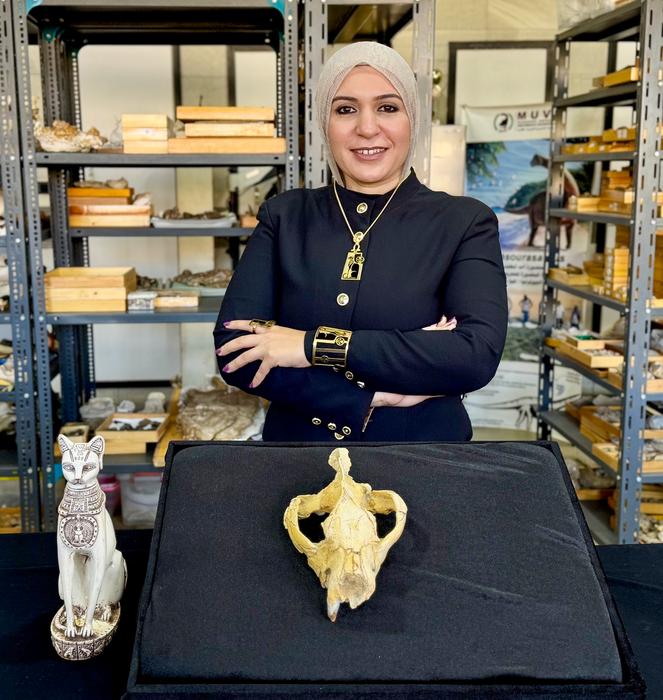A 30-million-year-old skull from Fayum, Egypt, is thought to come from the apex predator of the times, which would have been the scourge of early hippos and elephants, snacking on our own ancestors in between.
ADVERTISEMENT GO AD FREE
The cat and dog families evolved about halfway between the death of the dinosaurs and today. In-keeping with a common evolutionary pattern, they first appeared as relatively small predators, with some of their descendants evolving to fill larger niches. That doesn’t mean, however, that large herbivores previously had nothing to trouble them as long as they stayed away from crocodile-infested rivers.
Instead, the order hyaenodonta provided the first big carnivorous mammals, as well as plenty of small ones. A new discovery helps make sense of the African members.
Hyaenodonts were not more closely related to modern hyenas than other mammalian predators. Instead, the name comes from the resemblance of the distant families’ teeth; the hyaenodonts possessed shearing blades between their upper and lower molars. It was a set of those teeth that alerted a member the Sallam Lab team investigating a 30-million-year-old fossil bed in the Fayum Depression to its most precious find.
The team had been on the verge of abandoning the site when the teeth were seen sticking out of the rock. Further investigation revealed the rare site of an almost-complete skull. Upon extraction the team, realized they had a new species on their hands, and named it after the Egyptian goddess of protection, pleasure, and health: Bastet.
The species Bastetodon syrtos would have been around the size of a modern leopard, and lived at a time when familiar orders such as monkeys and Proboscidea (elephants) were well-established, and probably provided much of its prey.

Shorouq Al-Ashqar and the Bastetodon skull whose scientific description she was first author on.
Image credit: Professor Hesham Sallam
The team noted the similarity of Bastetodon to an even larger hyanenodont, found 120 years ago in the same fossil deposits and originally placed in the genus Pterodon. When fragments of lion-sized hyaenodont specimens were found at the start of the 20th century palaeontologists linked them with the mostly European genus and called the species Pterodon africanus.
ADVERTISEMENT GO AD FREE
However, the similarity to Bastetodon suggested this creature had similar origins, and the superb preservation of the Bastetodon skull allowed the team to assess its relationships more accurately. They concluded both were closely related to Falcatodon schlosseri. This makes them part of a family that, like humans long afterwards, spread from Africa in several waves to dominate much of the world.
With this knowledge, the team re-named the earlier discovery Sekhmetops africanus, with the new genus named after the lion-headed Egyptian goddess of wrath and war.
“The discovery of Bastetodon is a significant achievement in understanding the diversity and evolution of hyaenodonts and their global distribution,” said team member Mansoura University PhD student Shorouq Al-Ashqar in a statement. “We are eager to continue our research to unravel the intricate relationships between these ancient predators and their environments over time and across continents.”
At their peak, the hyaenodonts included some of the largest mammalian carnivores of all time, by some estimates as large as polar bears. However, as the global climate shifted the ancestors of cats, dogs, and hyenas proved more adaptable, and eventually displaced their former overlords.
ADVERTISEMENT GO AD FREE
“The Fayum is one of the most important fossil areas in Africa. Without it, we would know very little about the origins of African ecosystems and the evolution of African mammals like elephants, primates, and hyaenodonts. Paleontologists have been working in the Fayum for over a century, but the Sallam Lab demonstrated there is more to discover in this remarkable region,” said Dr Matt Borths of Duke University. Fayum’s value lies in the fact that these fossils cover an extraordinary 15-million-year window.
The study is published open access in the Journal of Vertebrate Paleontology.
Source Link: Before Lions And Wolves, Bastetodon Was The Apex Predator Early Monkeys Feared